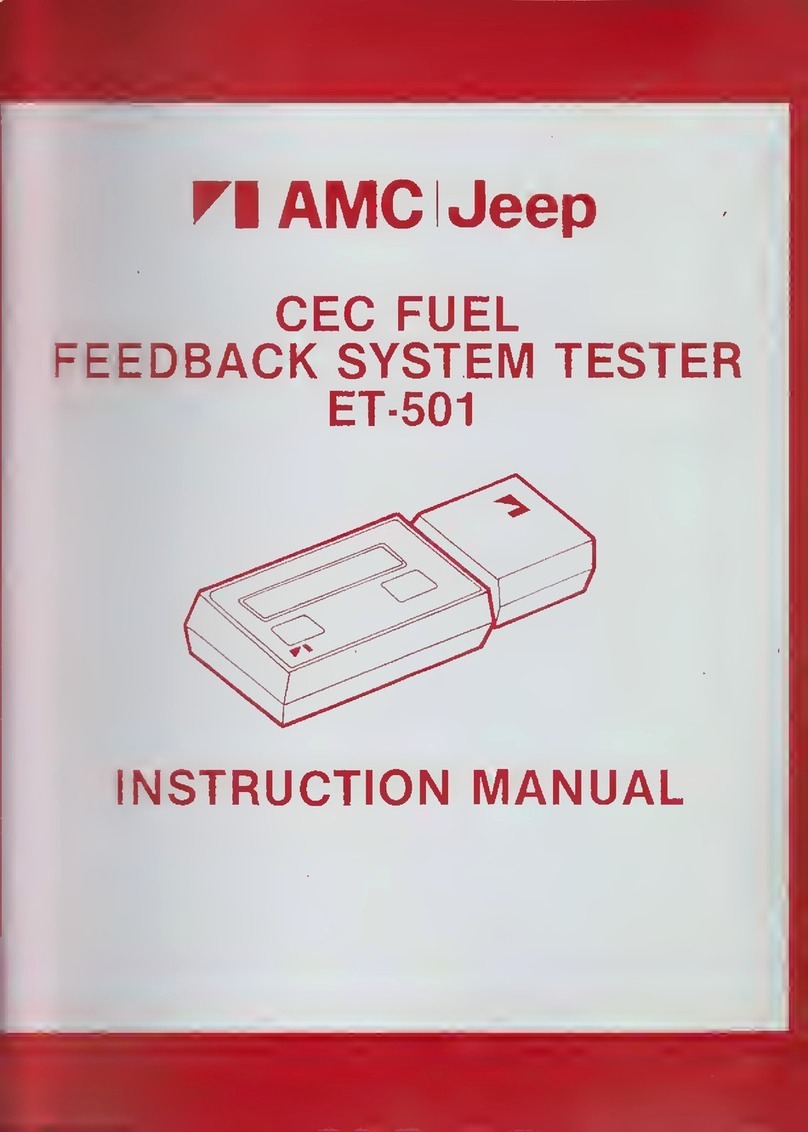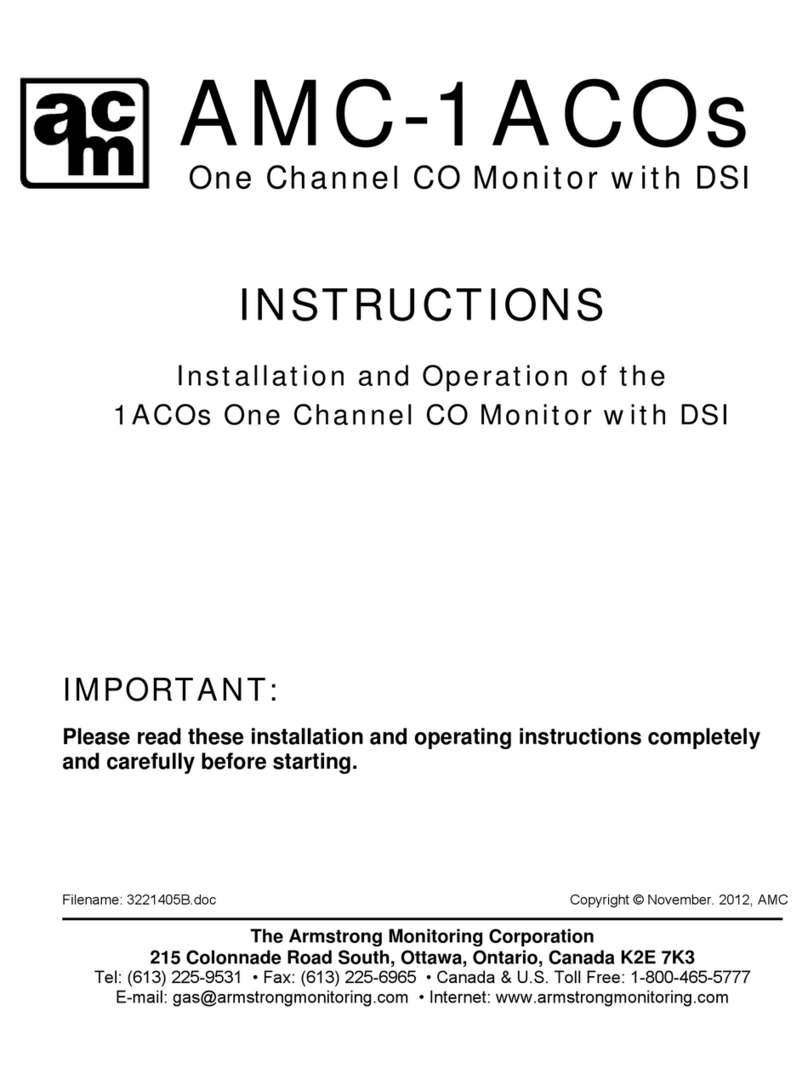
Gas Monitor 1ACO One-Channel Monitor
3
1WARRANTY
The AMC-1ACO one-channel monitor is warranted against defects in material and workmanship
for a period of two (2) years from date of shipment (except electrochemical sensor elements,
catalytic elements and portable monitors – one (1) year – refer to individual spec sheets for
additional exceptions). Calibration is not warranted. During the warranty period, Armstrong
will repair or replace components that prove to be defective in the opinion of Armstrong
Monitoring. The corporation is not liable for auxiliary interfaced equipment, nor consequential
damage.
NOTE: Any substitution or tampering with components without expressed, written permission of
ARMSTRONG MONITORING may result in intrinsic damage which will cancel the effectiveness
of the warranty. Extended warranties are available through the factory. Please contact factory.
Service agreements may supersede standard warranty terms.
1.1 LIABILITY
All Armstrong Monitoring systems shall be installed by a qualified technician and maintained
according to Armstrong Monitoring Installation and Maintenance Manual instructions.
Armstrong Monitoring shall not be responsible for any liability arising from auxiliary interfaced
equipment, consequential damage, the installation, or the operation of this equipment.
Armstrong’s total liability is contained in the warranty conditions stipulated above. No other
acceptance of liability is expressed or implied by Armstrong Monitoring. Except as set forth
herein, Armstrong Monitoring makes no warranty, expressed or implied, with respect to the
fitness for any particular purpose or use or otherwise of the products or services, or on any parts
or components or labour furnished as part of the sale. In no event shall Armstrong Monitoring,
its officers, directors, employees, agents or servants be liable to the buyer or any other party for
any loss of profit, loss of use, incidental, consequential or special damages arising out of the
sale, delivery, servicing, use, loss of use, of the products or of any part thereof, irrespective of
whether Armstrong Monitoring or any of its officers, directors, employees, agents or servants
has advanced notice of the possibility of such damages. In no event will the total liability to the
buyer exceed the sum paid to Armstrong Monitoring by buyer for the products and services.
1.2 PRODUCT RETURN
All products that must be returned for warranty service will be shipped by prepaid freight and will
only be accepted with a Returned Materials Authorization (RMA) number issued by
ARMSTRONG MONITORING. Goods returned to the client will be by freight collect.
1.3 MODIFICATIONS AND SUBSTITUTIONS
Due to an ongoing development program, Armstrong Monitoring reserves the right to modify the
design and substitute components in any of its products without prior notice. All changes are at
the sole discretion of Armstrong Monitoring, and the corporation shall not be liable for any cost
arising out of such modifications or substitutions that may be incurred by the user.































